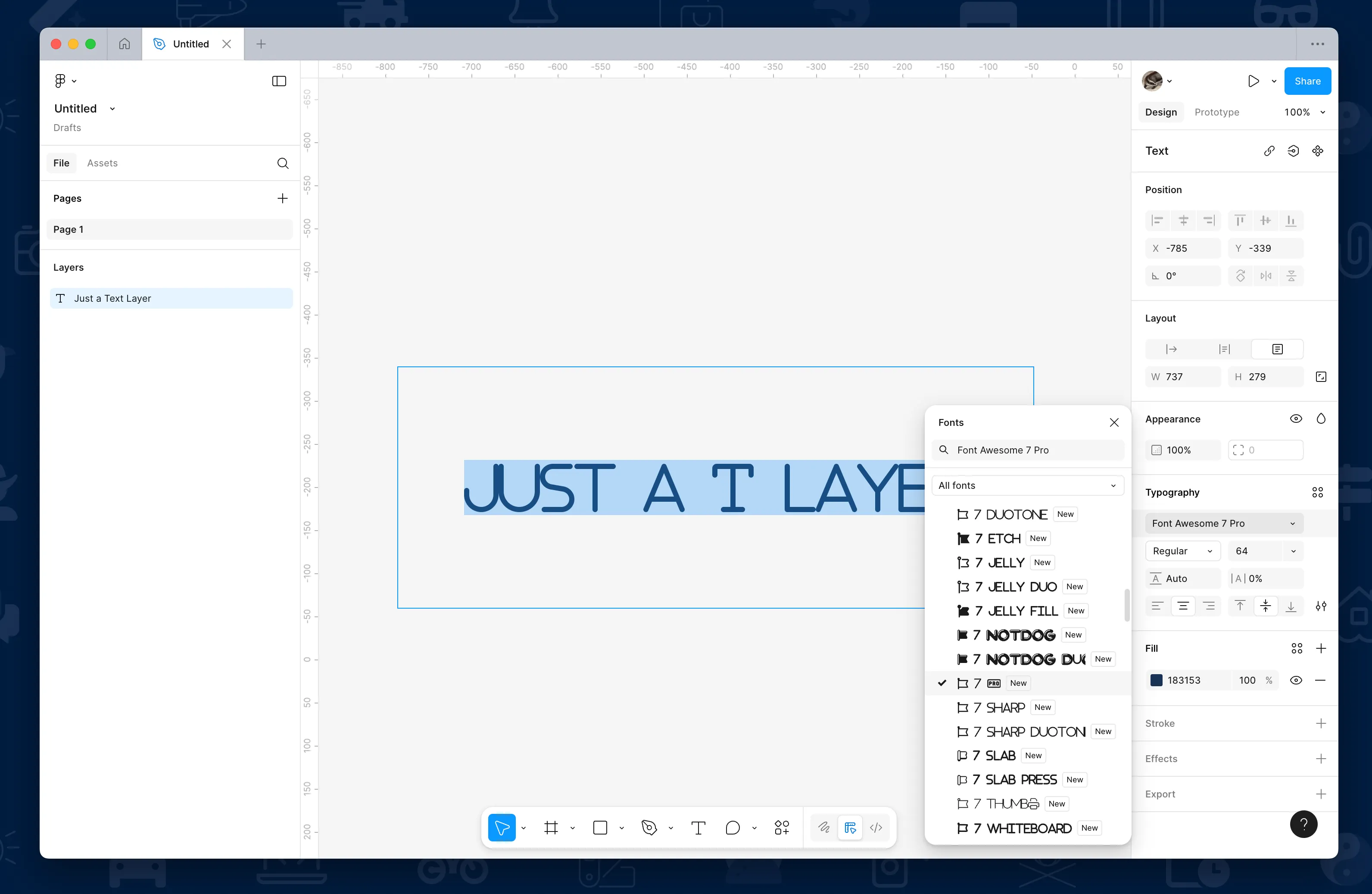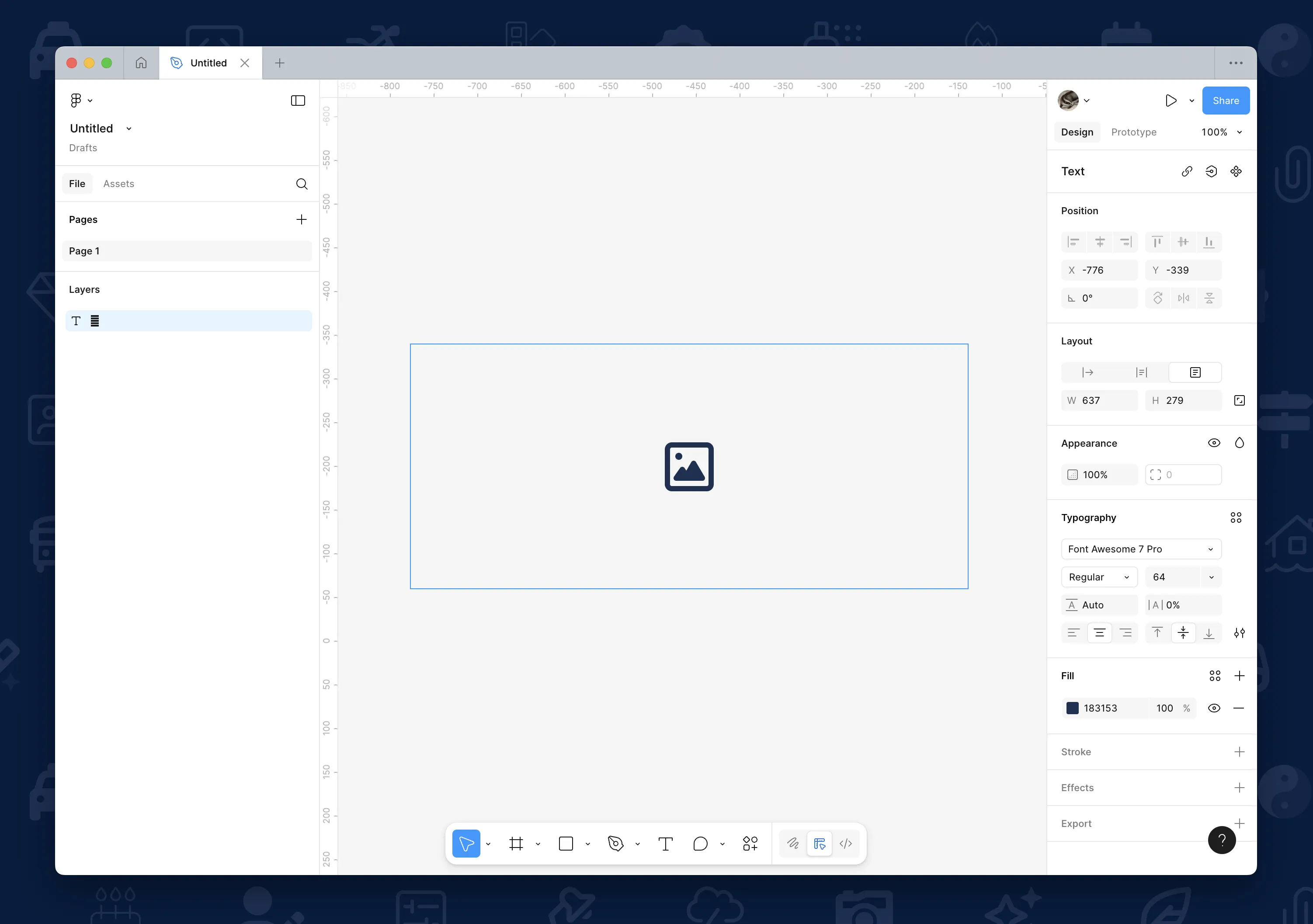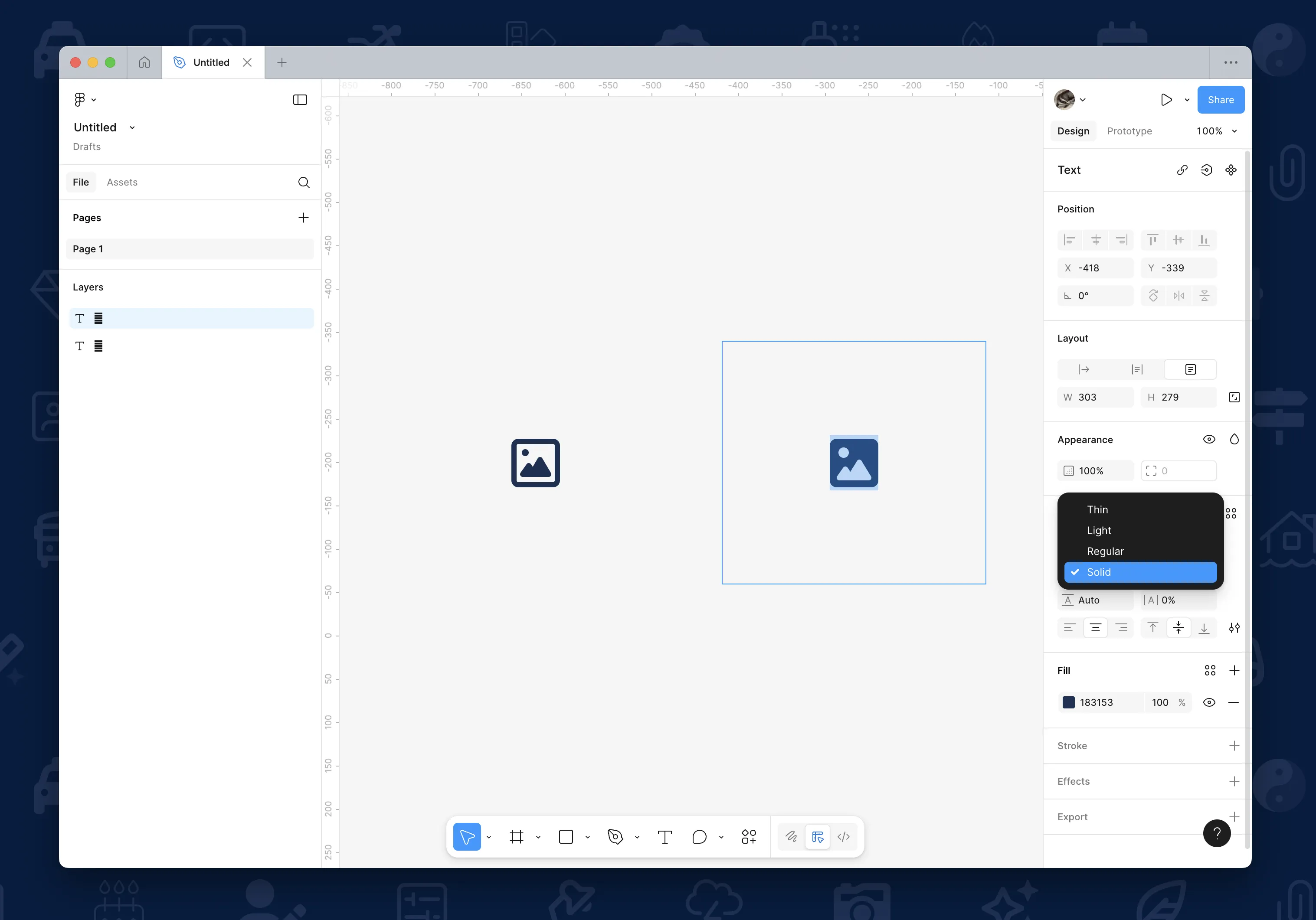Using Ligatures
Our ligatures feature allows you to more easily insert icons into a document’s text layer. Learn the basics of creating a text layer, selecting an icon, and adjusting the style and weight below.
When working in desktop applications, like Adobe Illustrator, Figma, and Sketch, you can use Font Awesome as a typeface in any text area. We have ligatures for each and every icon so you can type in the name of the icon you want and it will magically appear.
Add an Icon using Ligatures
Section titled “Add an Icon using Ligatures”Open a Document in Your Desktop App
Section titled “Open a Document in Your Desktop App”After completing the steps in set up, open a new or existing document in the Desktop app you want to use Font Awesome icons in. We’ll use a new document in Figma for the walkthrough below.
Create a New Text Layer
Section titled “Create a New Text Layer”However your app allows you, create a new layer or text block to insert text into.
 A new text layer created in a Figma document
A new text layer created in a Figma document
Set the Font/Typeface
Section titled “Set the Font/Typeface”Next, using your app’s font/typeface selector, find and select the Font Awesome icon family you want to use for the current text layer/block.
 Selecting Font Awesome typeface
Selecting Font Awesome typeface
Type the Icon’s Name
Section titled “Type the Icon’s Name”Next, you’re all set to reference the icon you want to use. Just start typing the icon’s name and as you finish, our ligatures should convert the letters into the correct symbol. Geee, Mr. Wizard!
 “image” typed into the text layer renders the icon
“image” typed into the text layer renders the icon
Don’t worry if other icons appear as you are typing the text for the icon you want. Once you’re done, our ligatures will honor the final word you’ve typed. You can also type in an icon’s alias, if you like to stay undercover like Ethan Hunt.
Adding Kit Custom Icons
Section titled “Adding Kit Custom Icons”If you are using the Kit custom icon font, it works the same as all the other Font Awesome font ligatures. You can just type in the name of the icon and it will appear!
Choose a Style by Adjusting Font Weights
Section titled “Choose a Style by Adjusting Font Weights”Font Awesome comes in several styles, depending on the typeface you’re using. If you’ve installed all .otf files, you can change the weight of your text layer/block to switch between the different icon styles.
 Switching from Regular to Solid style of the Image icon using font weight
Switching from Regular to Solid style of the Image icon using font weight
Duotones and Ligatures
Section titled “Duotones and Ligatures”You can add duotone icons into your designs using ligatures, but you’ll need to add each of the icon’s layers separately, and then take an extra step to align the two layers.
Open your desktop design app and create a text box with the font set to a duotone style, like Font Awesome 7 Duotone or Font Awesome 7 Sharp Duotone. To get the primary layer, type the icon’s name and then one hash (#). To get the secondary layer, type name and two hashes (##).
| Layer | Shortcut | Example |
|---|---|---|
| Primary layer | [icon-name]# | crow# |
| Secondary layer | [icon-name]## | crow## |
Typing crow# will get you the body of the crow, and typing crow## will get you the beak and legs.
Then change the font size to the size you want them to appear and set the text boxes to the same height and width. Adjust the color and opacity of the two layers as you like. The last step is to align the two text boxes to overlap using the align tools for vertical and horizontal center.
 Assemble and align the parts of the duotone icon
Assemble and align the parts of the duotone icon
Other Ways to Use Duotone Icons
Section titled “Other Ways to Use Duotone Icons”You can also add duotone icons as as a single unit, but there are a few gotchas to consider. First, your graphics program or application will need to support embedded opacity within typefaces. (Otherwise, both layers of the duotone icon will appear as 100% black.) Also, you won’t be able to change the color or opacity of the icon or its parts, unless you first convert the icon to outlines. The icon will default to black, with the second layer at 40% opacity. For this reason, we recommend using the two-part method above.